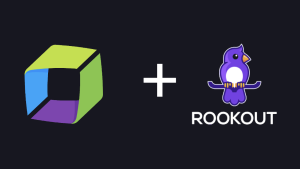Atlassian is trying to redefine work, collaboration, and flow of work. One word that seems to sum it up nicely is DevOpsas it embraces a different way of how we think about how we create value for our customers and our employer and how the work we create flows through our processes.
As the DevOps activist that I am, I was very interested in hearing the stories from Stephan Henderson (@thephen) and Amber Frauenholtz during the Atlassian Summit 2017 Partner Day. It made me realize how perfectly our own Dynatrace DevOps message fits with the one Atlassian is talking about.
I took meeting notes in the hope our blog readers find them useful. Before I share those notes I wanted to say THANKS to Atlassian for letting us (Daniel Dyla and I) present our Monitoring as a Self-Service in your Atlassian DevOps Toolchain (download slides). Here is the selfie and an aerial shot Daniel and I took during the presentation:


UPDATE Sept 15: We recorded our presentation and uploaded it to YouTube: Dynatrace & Atlassian: Enabling the AI-Powered DevOps Toolchain.
A more technical video we recorded shows how we built the integration. Also available as YouTube Tutorial on Connecting Dynatrace AI with Atlassian DevOps Toolchain.
Now let me get into some of the presentation notes I took and how I think it relates to what we, at Dynatrace, have built to help companies succeed when it comes to DevOps.
DevOps in the Real World by Stephen Henderson
Stephen started talking about his previous life at a startup and how this “Cloud Native” company started with $400/Month and went to $120k/Month on AWS Costs within 2 years. He mentioned how important it is to monitor the software from a resource consumption perspective but also understanding which features really drive business value and not just cost money.
Dynatrace: Dynatrace Full Stack Monitoring covers all that. One example we showed today in our session was to bring real user monitoring data into your Jira Tickets so that Product Owners can see how many users are really using a certain feature and whether it is really successful or not.

Stephen presented the Atlassian DevOps way aligned with the Three Ways of DevOps as described in the Phoenix Project. It was all about improving flow:
- Always Know Flow: Trace Idea to Customer
- Break work into smaller batch sizes; don’t let status reporting become your job; spot constraints
- Dynatrace: Automate data and status exchange between tools
- Always Control Flow: Trace Quality
- Handle bottlenecks, plan for unplanned work
- Dynatrace: AI and Root Cause Diagnostics from Dev to Ops reduces time for unplanned work
- Always Improve Flow: Improve on real user feedback
- Intentional Experiments; collaborate feedback throughout the organization; capture, celebrate and repeat
- Dynatrace: Real User Monitoring Feedback on Experiments (A/B, Blue/Green)
In our presentation we gave today we highlighted several ways how Dynatrace helps with controlling the flow of quality. It is the Dynatrace Artificial Intelligence and Root Cause Information from our Dynatrace OneAgent we provide via ChatOps into tools such as HipChat (and soon also Stride). This allows you to keep control over flow and reduce unplanned work:

There was much more that Stephan had to say. I suggest you follow him on Twitter and check out some of the other presentations he has done.
Pitching DevOps in the Enterprise by Amber Frauenholtz
I really liked how Amber started her talk – by bringing up different lengthy definitions of what DevOps means. The shortest and most compelling was the one from Atlassian: “A culture where dev and ops collaborate to build a faster, more reliable release pipeline”
I also liked the way they see themselves in the DevOps ecosystem. Check out this statement:
“Atlassian is the culture and collaboration layer of DevOps”
There are several interesting things Amber had to say about how to help larger enterprises with adopting DevOps. She addressed the typical roadblocks:
- Security: configure who has access to what
- Control: workflows, change management, CI/CD
- Scale: Performant, available redundant and easy to maintain
- Compliance: Regulatory compliance, auditing, …
While the rest of the talk was a lot about how to help companies with selling more Atlassian licenses 🙂 – I really loved some of the very practical advice Amber gave. Such as: start with the smaller low hanging fruit victories and use that to tackle the larger problems later on.
A big portion of DevOps is culture. For that Atlassian provides their free Atlassian Team Playbook that I can recommend everyone to have a look at.
If you are interested in more resources check out atlassian.com/devops and especially look at the DevOps Maturity Model
Dynatrace in the Atlassian DevOps Toolchain
I am excited about hearing what Atlassian is doing to help companies around the world to build better software in a more sustainable and better way. Dynatrace is one ingredient to that story. We proved that we fully integrated with the DevOps Toolchain and provide fast actionable feedback to those that have to make decisions fast.
If you want to learn more about how Dynatrace integrates into your Atlassian Toolchain then either stop by our booth at Atlassian Summit 2017 (we are located right next to Theatre B) or check out these resources online
Keep DevOps’ing 🙂



Looking for answers?
Start a new discussion or ask for help in our Q&A forum.
Go to forum